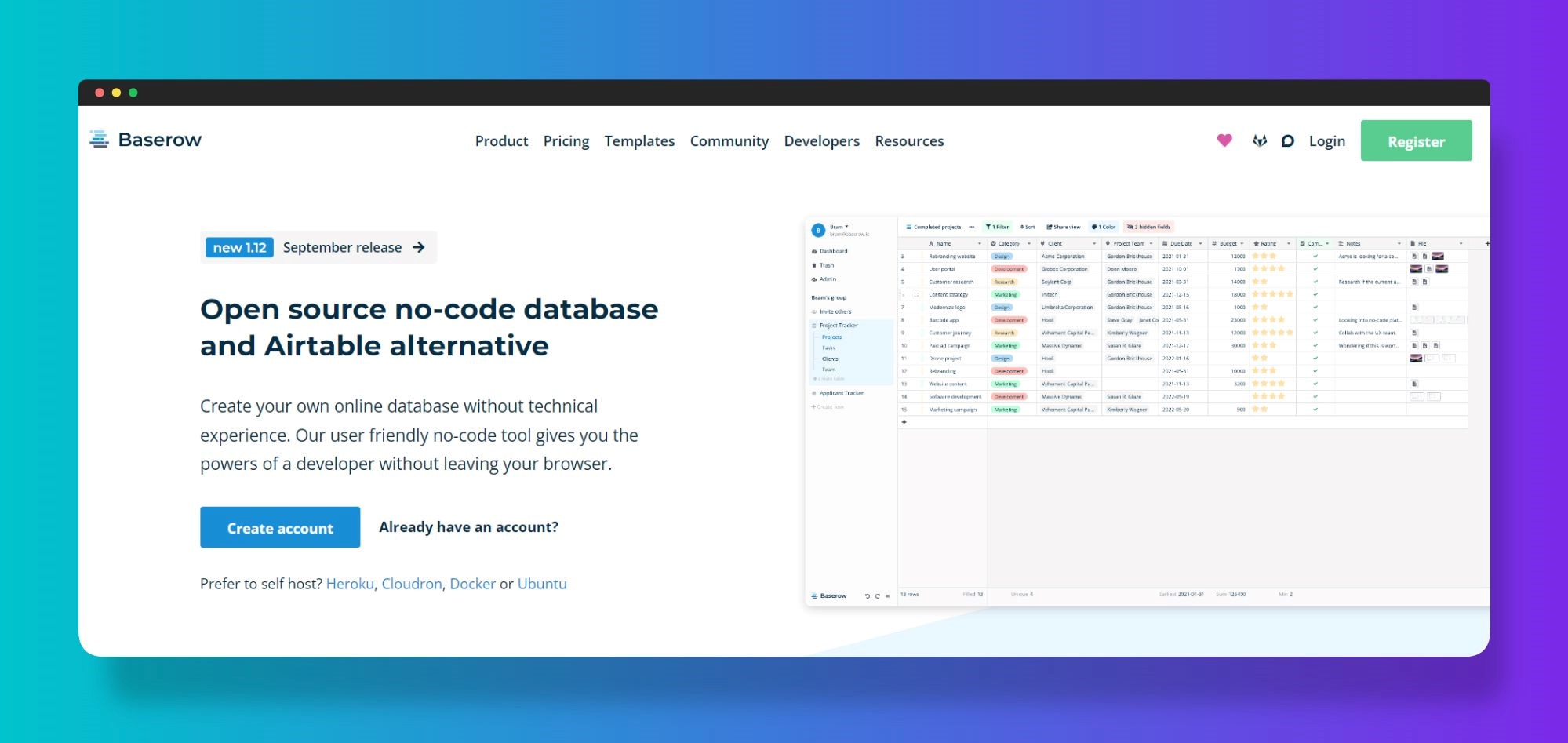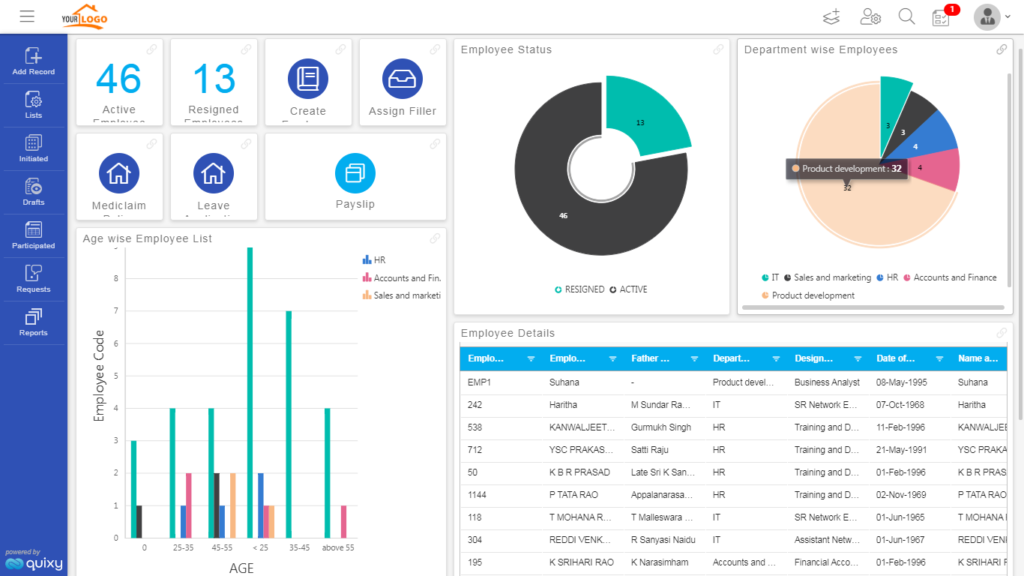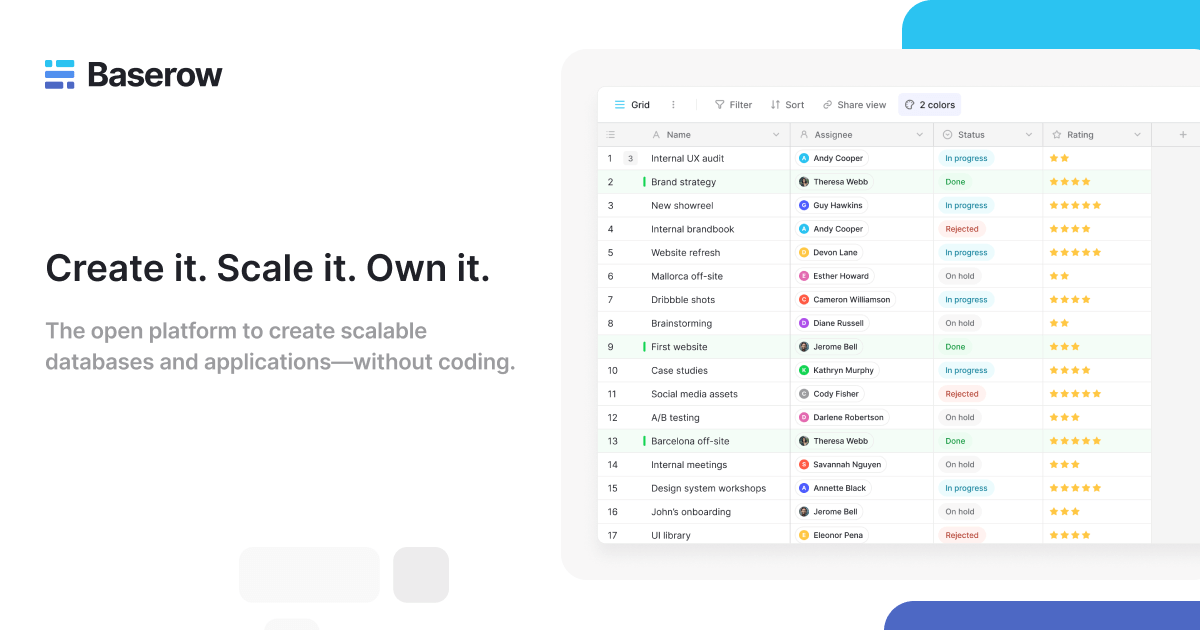Exactly How No-Code Devices Simplify Open System Database Creation for Everybody
Exactly How No-Code Devices Simplify Open System Database Creation for Everybody
Blog Article
Checking Out the Advantages of Scalable Data Sources That Call For No Coding Skills for Reliable Data Management Solutions
The appearance of scalable databases that eliminate the need for coding abilities presents a transformative chance for organizations looking for efficient information management options. By enabling non-technical individuals to harness the power of data via intuitive user interfaces, these systems enhance access and foster partnership throughout diverse teams. Moreover, their cost-effectiveness and versatility to advancing company demands can considerably simplify operational processes. As we think about the effects of such advancements, it ends up being critical to analyze just how they can improve the landscape of data administration and drive lasting growth in a competitive atmosphere.
Boosted Availability for Individuals
Improved ease of access for users is a critical element of scalable databases, ensuring that information management systems are instinctive and easy to use. In a period where data-driven decisions are vital, ease of access enables a bigger variety of individuals, consisting of those without comprehensive technical know-how, to engage with database systems properly. This democratization of data accessibility helps with boosted cooperation across departments, empowering employees to remove understandings and make informed decisions.
User-friendly user interfaces, such as drag-and-drop features and aesthetic data depiction, simplify complex information communications. These enhancements decrease the understanding contour associated with standard data source management, enabling users to concentrate on leveraging information instead of coming to grips with technological intricacies. Scalable data sources usually integrate adjustable control panels and real-time analytics, providing customers with prompt understandings customized to their specific needs.

Cost-Effectiveness and Resource Cost Savings
Efficient information management not just depends upon accessibility but also on cost-effectiveness and resource cost savings. Scalable data sources developed for individuals without any coding skills dramatically lower financial burdens typically connected with traditional data source administration systems. By eliminating the requirement for specialized programs competence, organizations can allot their resources extra effectively, focusing funds on core business tasks instead than substantial training or working with competent personnel.
Additionally, these databases usually use cloud-based remedies, which further reduce prices connected to hardware and upkeep. Organizations can scale their data source remedies according to their requirements, staying clear of the expenditures sustained from over-provisioning resources. This versatility means services can adapt to changing needs without incurring unneeded costs, bring about considerable lasting financial savings.
Furthermore, user-friendly interfaces enhance information entrance and management procedures, reducing the time invested on management tasks. This efficiency converts into labor price financial savings, permitting groups to concentrate on strategic efforts rather than regular upkeep. On the whole, taking on scalable data sources that require no coding abilities cultivates a more affordable approach to data administration, enabling companies to maximize their resources while maintaining high levels of functional efficiency.
Improved Collaboration Across Teams

In addition, scalable databases help with smooth interaction among employee. With user-friendly interfaces that call for no coding skills, staff members can easily develop, modify, and share reports or dashboards tailored to their specific demands. This democratization of data equips non-technical users to add insights, boosting the collective setting.
Additionally, these databases sustain simultaneous gain access to, allowing multiple individuals to function on the exact same dataset all at once. This function enhances efficiency, as groups can involve in joint information analysis without the risk of variation control concerns. The capacity to leave comments or notes straight within the data source further advertises discussion and clears up data interpretations.
Streamlined Information Monitoring Processes
In today's data-driven setting, organizations identify the necessity of structured data administration refines to optimize efficiency and precision. By leveraging scalable databases that need no coding abilities, companies can simplify their information handling and reduce the complexities a knockout post typically connected with conventional data source systems. This access encourages non-technical users to involve straight with data, promoting quicker decision-making and reducing reliance on specialized IT employees.
Streamlined information monitoring procedures boost operations by automating regular tasks such as information access, recognition, and coverage. Automated data assimilation makes sure have a peek at these guys that info from different sources is accumulated seamlessly, eliminating silos and fostering a linked sight of important organization metrics (no-code). Moreover, user-friendly interfaces permit personnel to adjust data easily, allowing them to produce understandings that drive critical efforts without the demand for extensive training.
This performance not only accelerates functional procedures but also lessens the potential for human error, making certain that information remains precise and trustworthy. Eventually, streamlined information administration procedures through scalable databases bring about boosted productivity, allowing organizations to concentrate on core tasks while guaranteeing that their information administration techniques are effective and effective.
Scalability for Growing Organizations

For broadening ventures, the ability to scale up or down is critical. A scalable data source can manage an increase of information generated from new clients, items, or services, guaranteeing that business procedures remain uninterrupted. These data sources provide the capability to take care of peak tons efficiently, which is vital during durations of quick development or seasonal spikes.
Additionally, several scalable database remedies are developed with straightforward user interfaces that call for no coding skills, empowering non-technical team to manage information effectively (no-code). This democratization of data administration allows organizations to designate sources tactically and lower dependence on specialized IT employees
Inevitably, taking on a scalable database not only improves operational effectiveness but additionally fosters an environment where companies can advance and introduce without the restraints of typical database systems. This flexibility placements organizations for lasting success in today's competitive landscape.
Conclusion
To conclude, scalable databases that require no coding skills supply significant benefits for reliable data administration. These systems boost accessibility for non-technical users, reduce functional costs, and advertise partnership have a peek at these guys throughout teams. By simplifying information administration processes and providing scalability for expanding organizations, such options enable companies to adapt to altering needs properly. Inevitably, the fostering of these user-friendly databases promotes advancement and placements services for lasting success in a dynamic setting.
Enhanced accessibility for individuals is a crucial facet of scalable data sources, making sure that data monitoring systems are user-friendly and user-friendly.User-friendly interfaces, such as drag-and-drop features and aesthetic information representation, streamline complex information communications. Generally, taking on scalable data sources that call for no coding skills fosters a more affordable strategy to data monitoring, allowing organizations to maximize their sources while keeping high levels of functional efficiency.
By leveraging scalable data sources that require no coding skills, businesses can streamline their data handling and minimize the intricacies normally linked with standard database systems - no-code.Structured data administration procedures improve operations by automating routine jobs such as information entry, recognition, and coverage
Report this page